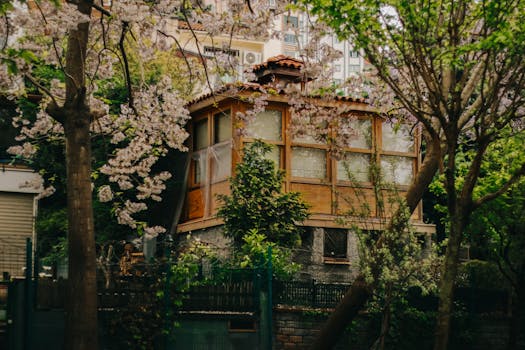
Urban Green Spaces: The Future of Outdoor Living in European Cities by 2025
Urban Green Spaces are becoming increasingly important in European cities, as they provide a tranquil escape from the hustle and bustle of city life. These green oases are not only beautiful, but they also play a crucial role in maintaining the physical and mental health of urban residents. In this article, we will explore the future of outdoor living in European cities, with a focus on Urban Green Spaces.
Introduction to Urban Green Spaces
Urban Green Spaces refer to parks, gardens, and other green areas that are located within urban environments. These spaces are designed to provide a natural retreat for city dwellers, where they can relax, socialize, and engage in outdoor activities. Urban Green Spaces can range from small pocket parks to large urban forests, and they can be found in a variety of settings, including residential areas, commercial districts, and industrial zones.
The Benefits of Urban Green Spaces
Urban Green Spaces offer a wide range of benefits, including:
- Improved air quality: Urban Green Spaces help to remove pollutants from the air, improving the overall air quality in urban areas.
- Reduced noise pollution: The presence of trees, plants, and other vegetation in Urban Green Spaces can help to reduce noise pollution, creating a more peaceful environment.
- Increased biodiversity: Urban Green Spaces provide a habitat for a variety of plants and animals, helping to maintain biodiversity in urban areas.
- Improved mental health: Spending time in Urban Green Spaces has been shown to have a positive impact on mental health, reducing stress and anxiety.
- Enhanced physical activity: Urban Green Spaces provide opportunities for outdoor recreation, such as walking, cycling, and sports, which can help to improve physical health.
The Future of Urban Green Spaces in European Cities
By 2025, European cities are expected to have even more Urban Green Spaces, as cities continue to prioritize sustainability and green infrastructure. Some of the trends that are expected to shape the future of Urban Green Spaces include:
- Increased use of green roofs and walls: Green roofs and walls are becoming increasingly popular in European cities, as they provide a way to incorporate green space into urban areas, even in areas with limited space.
- More emphasis on community engagement: Urban Green Spaces are expected to become more community-focused, with cities engaging with residents to design and maintain these spaces.
- Integration with other urban infrastructure: Urban Green Spaces are expected to be integrated with other urban infrastructure, such as transportation systems and public buildings, to create more sustainable and efficient cities.
Case Studies: Successful Urban Green Spaces in European Cities
There are many examples of successful Urban Green Spaces in European cities, including:
- The High Line in London: The High Line is a former industrial rail line that has been converted into a public park, providing a unique green space in the heart of the city.
- The Park at the Palais-Royal in Paris: This park is a tranquil oasis in the heart of Paris, providing a peaceful escape from the hustle and bustle of the city.
- The Superkilen park in Copenhagen: This park is a vibrant and diverse green space, featuring a wide range of plants, trees, and other vegetation, as well as public art installations and recreational facilities.
Conclusion
Urban Green Spaces are an essential component of European cities, providing a wide range of benefits for residents and visitors alike. As cities continue to prioritize sustainability and green infrastructure, we can expect to see even more innovative and effective Urban Green Spaces in the future. By 2025, European cities will be even greener, more sustainable, and more livable, thanks to the importance of Urban Green Spaces.




